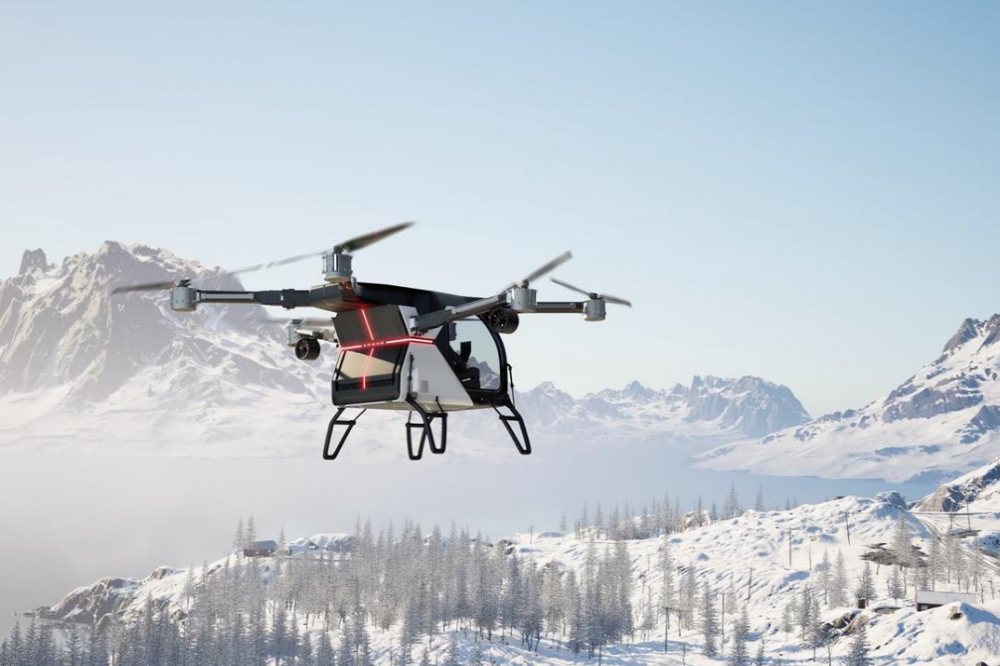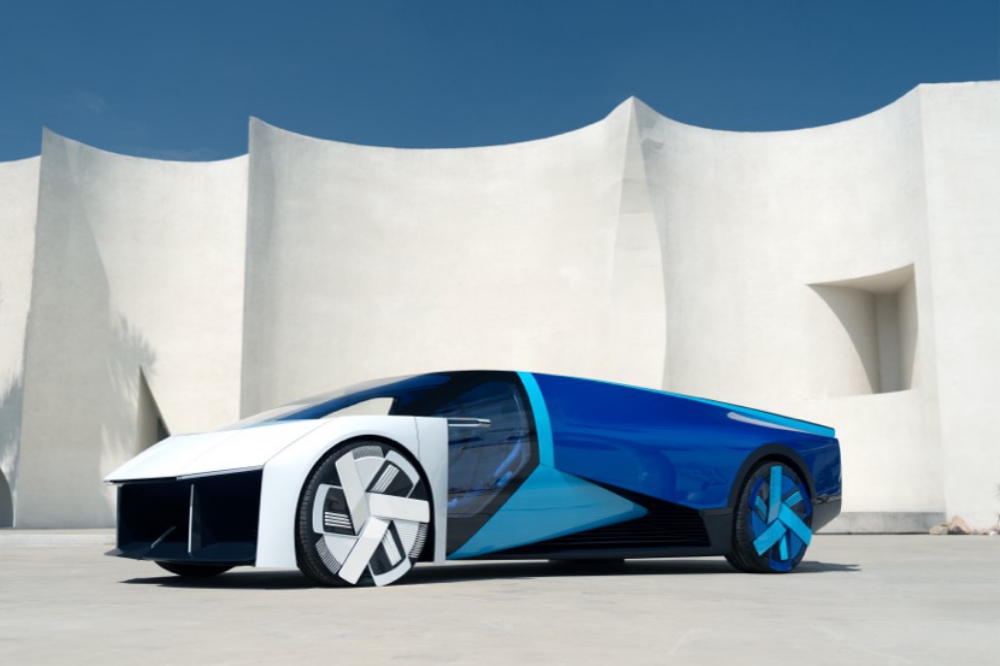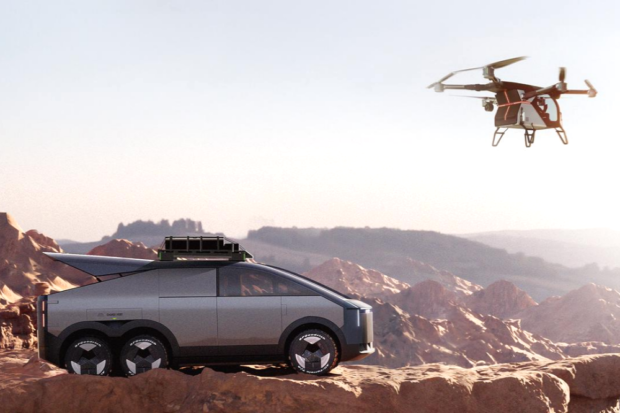At last week’s Consumer Electronics Show (CES) 2024 in Las Vegas, it was a Chinese company that stole the show with a pair of outlandish concepts that it terms “flying cars,” though the use of the term stretches the definition for one of them.
Manufacturer XPeng AeroHT, a subsidiary of Chinese automaker XPeng Motors, unveiled its “Land Aircraft Carrier,” a lunar rover-looking vehicle that actually consists of two vehicles: a ground module and an air module that deploys from the ground module for flight. The company said customers will be able to preorder the vehicle in the fourth quarter of this year, with deliveries starting in late 2025.

Also at CES, AeroHT made the international debut of its electric vertical takeoff and landing (eVTOL) flying supercar concept, demonstrating the aircraft outside China for the first time. Production and delivery of that model will happen after the Land Aircraft Carrier takes flight, the firm predicted in October.
Announced in October, the design looks a bit like Tesla’s recently unveiled Cybertruck, with sharp lines and a sleek exterior. But stowed in its rear is a drone-like aircraft, which users could theoretically deploy and fly in a variety of settings.

The Land Aircraft Carrier is a two-part design, with an air module for vertical takeoff and low-altitude flight and a ground module for driving and storage of the compact aircraft. In addition to personal use, AeroHT envisions the vehicle being used for public services such as emergency rescue.
Though the final design is still under development, the “modular flying car,” as the company describes it, already features a futuristic, “cybermechanical” exterior. According to AeroHT, all key tests in the vehicle’s research and development validation phase are complete, and it is in the “preparation stage” for mass production.The vehicle’s ground module is built for four to five passengers, driving on six wheels and three axles. That configuration enables 6×6 all-wheel drive and rear-wheel steering. In addition, an extended-range electric powertrain can be used to recharge the air module on the road.
The vehicle’s aerial component is fully electric, designed for a pilot and one passenger. It includes both manual and automatic driving modes, AeroHT said, as well as a 270-degree cockpit window for a wide field of view. And fortunately, getting it ready to fly is anything but a hassle.
“The automated system streamlines the separation and combination of the air and ground modules just like the Transformers [action figures], making flying more accessible and extending the user’s travel experience from the ground to the sky,” AeroHT said in a previous release.
The air module uses distributed electric propulsion to meet single point of failure safety requirements. Should one of its six rotors fail, the aircraft’s flight control system will automatically make adjustments, allowing it to fly safely even with only four propellers spinning. In addition, AeroHT in October tested a multi-parachute rescue system, which can be deployed at altitudes as low as 50 meters agl.
AeroHT this week also showcased its latest eVTOL flying car concept to an international crowd for the first time. The design, described as a supercar, was revealed in October alongside the Land Aircraft Carrier. CES attendees were treated to a live demonstration of its transition from land to flight mode.

On the road, the vehicle really does look just like a car—its flying components, such as manipulator arms and rotor systems, are folded and stored inside the vehicle in land mode. Those parts unfurl in flight mode, allowing the supercar to take off and land vertically. An “intelligent cockpit” discerns between the two modes, adapting components such as the steering wheel or dashboard based on the user’s selection.
“This functionality allows for intuitive navigation through congested areas and obstacles when conditions permit, effectively addressing the demand for short-distance, low-altitude travel,” AeroHT said.
The implication there is that users, when faced with traffic, will be able to switch to flight mode and bypass it through the air. That contrasts with other flying car designs that intend to limit takeoffs and landings exclusively to airfields, such as Aska’s A5.
In 2022, AeroHT tested a flying supercar prototype weighing about two tons. The company said mass production will follow as soon as policy, regulations, and application scenarios “become more mature.”
That day may be fast approaching. By AeroHT’s estimate, Chinese state and local authorities in the first half of 2023 released more than 120 policies related to the low-altitude economy, China’s equivalent to the FAA’s advanced air mobility (AAM) moniker. These include strategies such as the Outline for the Development of Green Aviation Manufacturing (2023-2035) and plans to set aside dedicated airspace for low-altitude operations.
China predicts the low-altitude economy will add hundreds of billions of dollars to its national output in the coming years. The industry kicked off in earnest with the first commercial electric air taxi flight in December, completed by manufacturer EHang.
Electric air taxis have not yet launched in the U.S., though the initial cohort of aircraft is expected to enter service in 2025. However, personal eVTOL designs, such as Pivotal’s Helix, are now beginning to hit the U.S. market.
There are also several U.S. firms billing themselves as ‘flying car’ manufacturers, and AeroHT could present some competition. In addition to Aska, Oregon-based Samson Sky is developing the Switchblade flying sports car, while California-based Alef Aeronautics is building the Model A drive-and-fly vehicle.
Alef intends to open vehicle sales in 2025, while Aska and Samson Sky have not yet announced entry into service dates.
Top Photo: XPeng AeroHT’s Land Aircraft Carrier, with its air and ground modules separated for flight
Source: Flying

